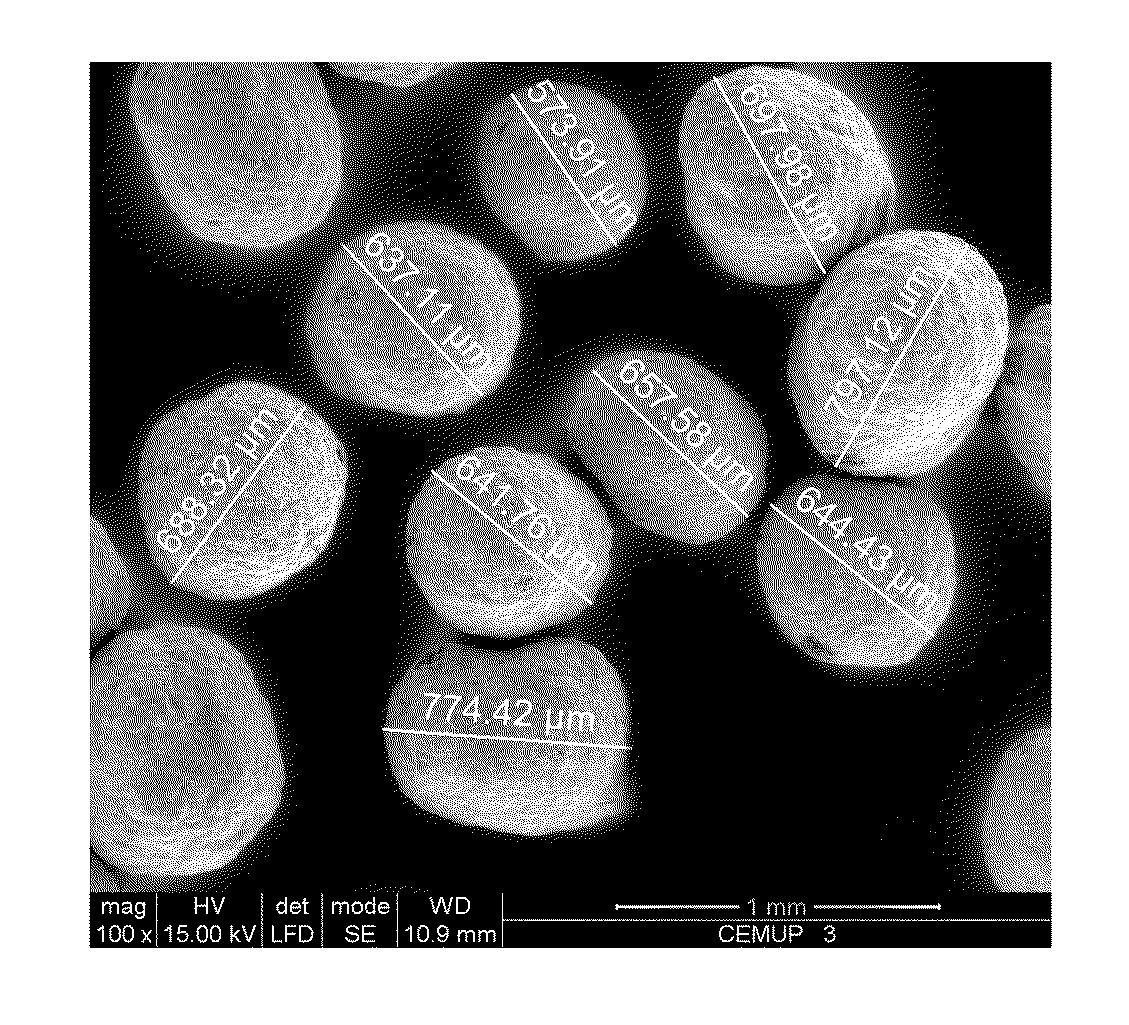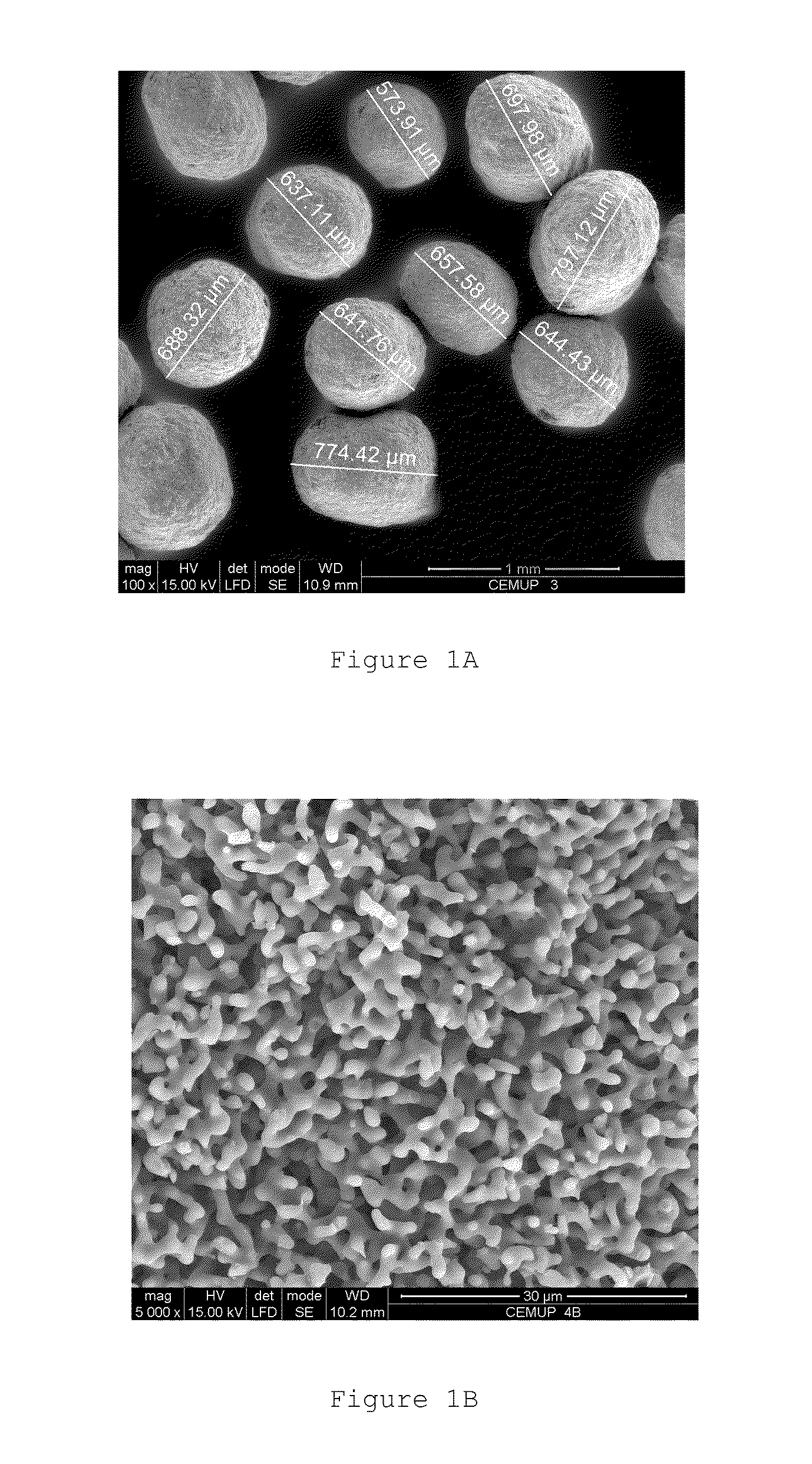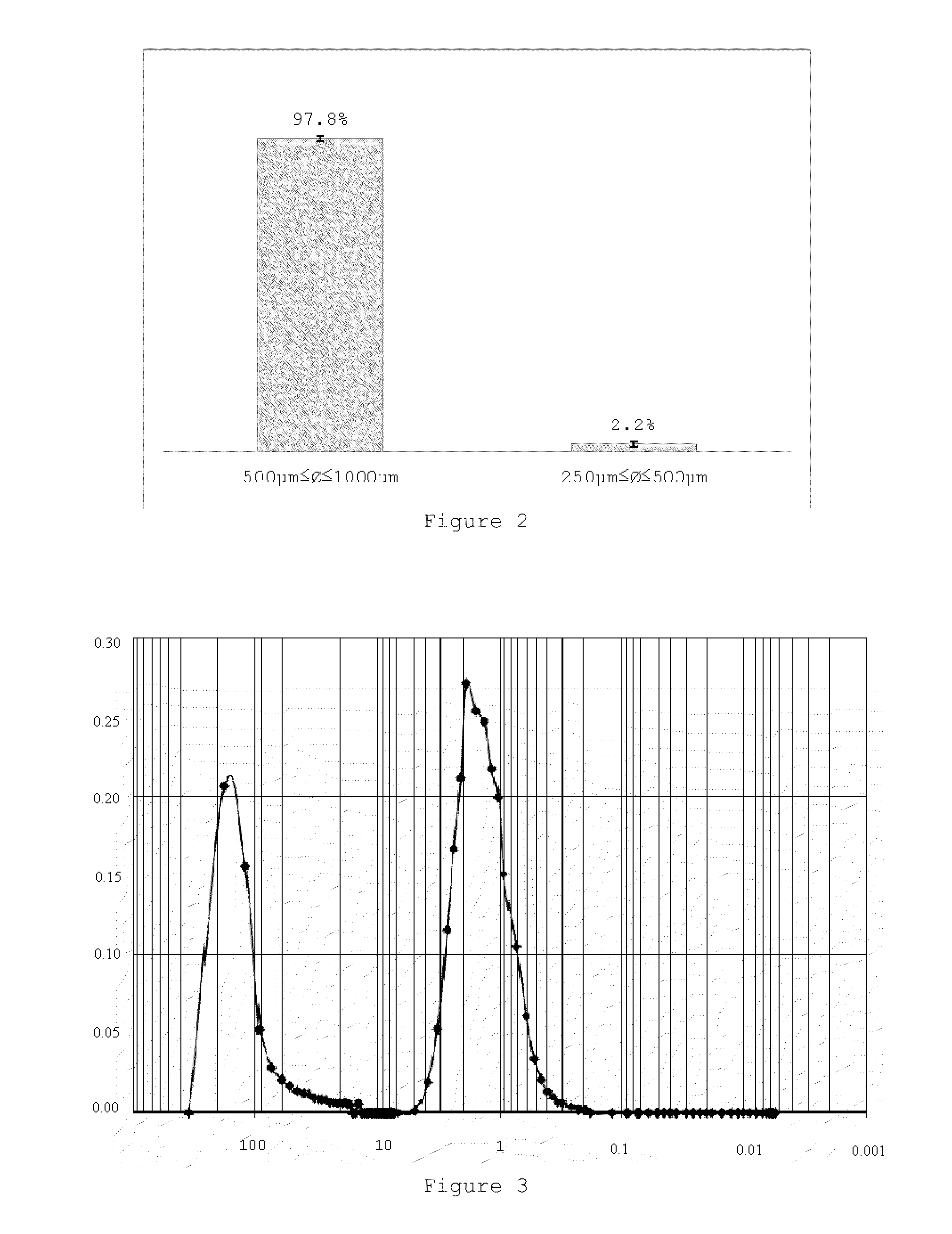Hydroxyapatite and bioglass-based pellets, production process and applications of thereof
- Summary
- Abstract
- Description
- Claims
- Application Information
AI Technical Summary
Benefits of technology
Problems solved by technology
Method used
Image
Examples
example 1
Hydroxyapatite, Bioglass-Based with at Least a Porogenic Agent Pellet Preparation with a Granulometry Between 500 to 1000 μm
Hydroxyapatite Preparation
[0060]500.00 g hydroxyapatite are prepared by chemical precipitation according to the following chemical reaction:
10Ca(OH)2+6H3(PO)4→Ca10(PO4)6(OH)2+18H2O
[0061]In order to achieve that, 370.45 g calcium hydroxide (Ca(OH)2, >98%), 345.15 g orthophosphoric acid 85 (wt / v) % (H3PO4) are weighed. 9 L purified water are poured in a large appropriated container, calcium hydroxide is added and mixed (Mixer R25) for 15 minutes. Meanwhile, 8 L purified water are poured in an appropriated recipient, orthophosphoric acid is added and the volume is completed with purified water up to 9 L. The addition of orthophosphoric acid is carried out via peristaltic pump (Minipuls 2) at a constant rate of 150 rpm. The mixture is performed for 4-5 hours, and cleaning of the calcium hydroxide container walls with purified water is required in order to prevent p...
PUM
| Property | Measurement | Unit |
|---|---|---|
| Temperature | aaaaa | aaaaa |
| Temperature | aaaaa | aaaaa |
| Fraction | aaaaa | aaaaa |
Abstract
Description
Claims
Application Information
 Login to View More
Login to View More - R&D
- Intellectual Property
- Life Sciences
- Materials
- Tech Scout
- Unparalleled Data Quality
- Higher Quality Content
- 60% Fewer Hallucinations
Browse by: Latest US Patents, China's latest patents, Technical Efficacy Thesaurus, Application Domain, Technology Topic, Popular Technical Reports.
© 2025 PatSnap. All rights reserved.Legal|Privacy policy|Modern Slavery Act Transparency Statement|Sitemap|About US| Contact US: help@patsnap.com



